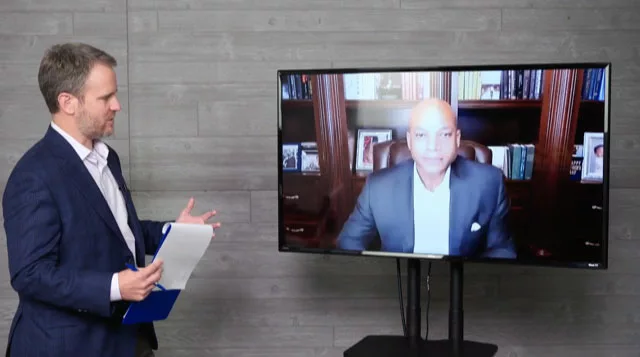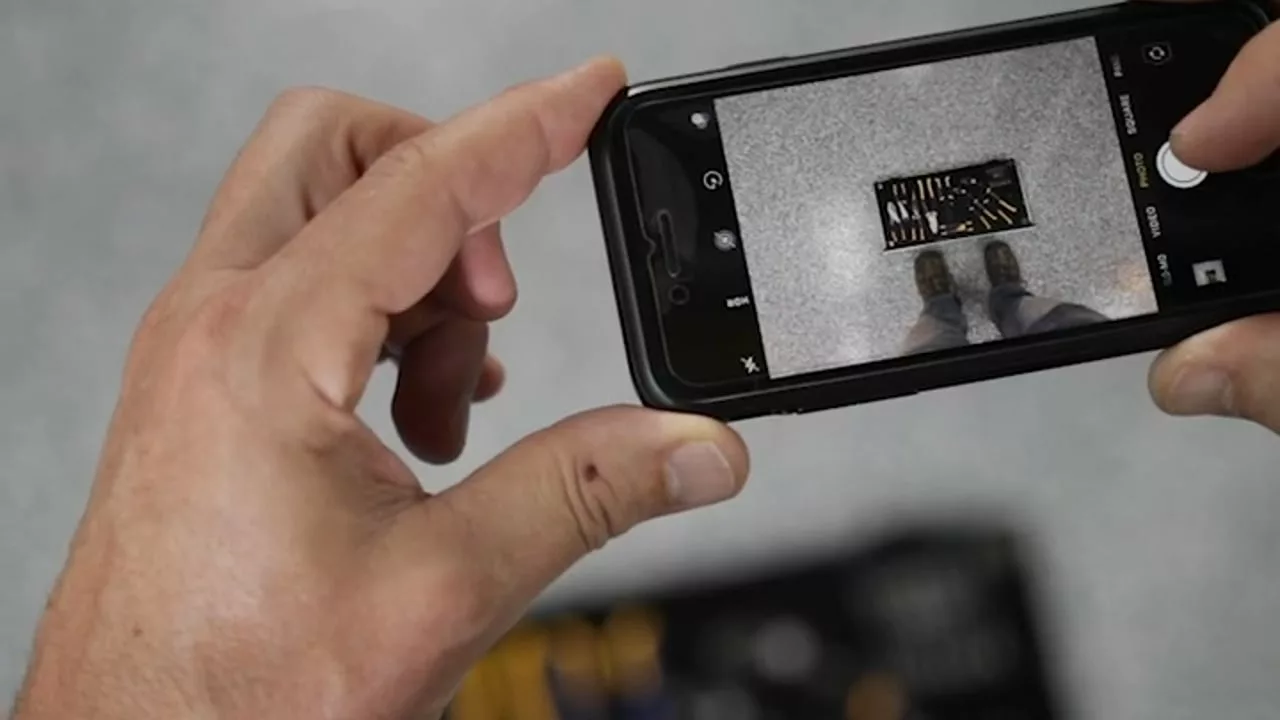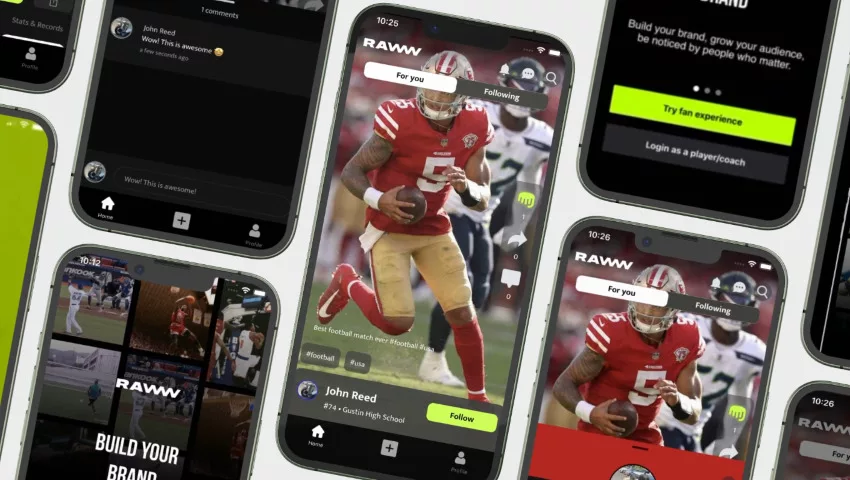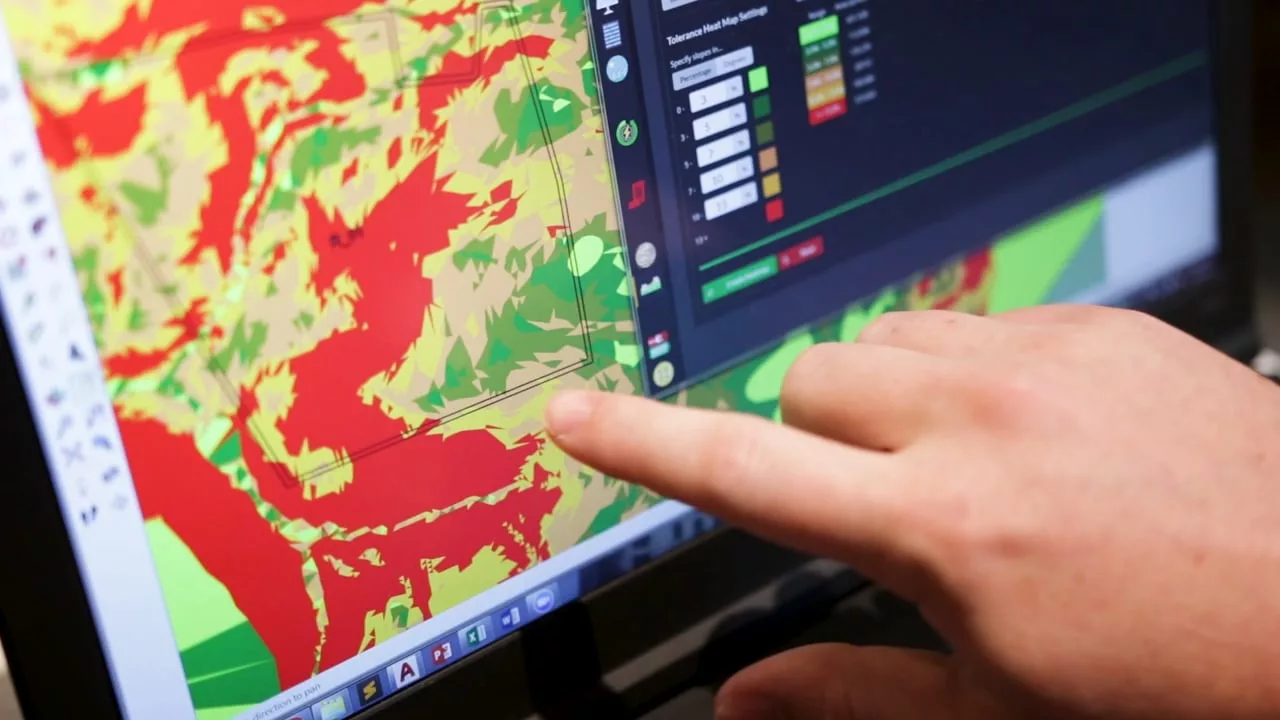
Live streaming an event often plays second fiddle to traditional broadcast methods, yet it carves its niche with unmatched accessibility and real-time engagement. This unique characteristic distinguishes live streaming as a formidable medium in the expansive world of event broadcasting, offering a distinct experience that sets it apart as a category in its own right. Critical components of a successful live stream include choosing the right platform, ensuring high-quality equipment, and engaging content preparation, each known for their critical roles in the streaming process.
Live streaming software also offers a versatile but intricate choice for streamers looking to elevate their event’s digital presence. Going a bit deeper, each aspect of live streaming presents challenges, technical requirements, promotional strategies, and recommendations for audience interaction. The following sections will detail these areas, providing a comprehensive understanding of what makes live streaming an invaluable tool for event organizers worldwide.
What is live streaming?
Live streaming is the process of broadcasting video content in real time over the Internet. It allows creators to share events as they happen, connecting with viewers globally without needing physical presence. This digital marvel transcends traditional broadcasting by enabling interactive experiences like live chats and instant feedback.
As a dynamic communication tool, live streaming serves various purposes, from entertainment and education to marketing and social engagement, making it a versatile choice for content creators aiming to reach a broad audience instantly.
Choosing the right platform
 Selecting the ideal platform for live streaming is crucial in determining the reach and engagement of your event. Each platform, such as YouTube, Facebook Live, Twitch, and Instagram Live, offers unique features that cater to different audiences and content types. YouTube is known for its broad audience and monetization options, making it suitable for various events.
Selecting the ideal platform for live streaming is crucial in determining the reach and engagement of your event. Each platform, such as YouTube, Facebook Live, Twitch, and Instagram Live, offers unique features that cater to different audiences and content types. YouTube is known for its broad audience and monetization options, making it suitable for various events.
Facebook Live capitalizes on social network integration and real-time interaction, ideal for community-driven content. Thanks to its interactive features and dedicated audience, Twitch is the go-to for gaming events. Instagram Live provides instant access to mobile users, perfect for on-the-go streaming and spontaneous content.
Choosing the right platform involves understanding your audience’s preferences and the features that best support your live-streaming goals.
YouTube: Wide audience, monetization options
YouTube shines with its vast global audience, making it a powerhouse for reaching viewers around the globe. Its monetization options are a significant draw, offering streamers various revenue streams, including ads, channel memberships, and viewer donations.
Facebook Live: Engages social network, real-time interaction
Facebook Live excels in leveraging the power of social networks for enhanced engagement. It allows real-time viewer interaction, creating a vibrant community atmosphere perfect for fostering connections and building a loyal audience.
Twitch: Ideal for gaming, interactive features
Twitch is the go-to destination for gaming enthusiasts, distinguished by its interactive features such as live chats, emotes, and channel subscriptions. It provides a dedicated platform for gamers to connect, making it the ideal choice for streaming gaming content.
Instagram Live: Great for mobile users, instant access
Instagram Live offers instant access to live content, catering to a mobile-first audience. It’s perfect for creators looking to deliver spontaneous, engaging content on the go, appealing to a younger demographic that values quick and interactive experiences.
Necessary equipment
 The right equipment is non-negotiable for a successful live stream. At the core, a high-definition (HD) camera ensures your video quality meets viewers’ expectations, capturing every moment with clarity. Condenser microphones are essential for delivering clear, crisp audio, making every word heard without distraction.
The right equipment is non-negotiable for a successful live stream. At the core, a high-definition (HD) camera ensures your video quality meets viewers’ expectations, capturing every moment with clarity. Condenser microphones are essential for delivering clear, crisp audio, making every word heard without distraction.
LED lighting provides consistent, flattering illumination, eliminating shadows and enhancing the visual appeal of your stream. Lastly, a tripod offers stability, preventing shaky footage and maintaining a professional appearance throughout the broadcast. Together, these tools form the foundation of a high-quality live-streaming setup, enabling creators to produce content that stands out.
Camera: High-definition (HD) for better quality
A high-definition (HD) camera is pivotal for capturing sharp, straightforward video content. It elevates the quality of your live stream, ensuring that every detail is visible to your audience, thus enhancing their viewing experience.
Microphone: Condenser mics for clear audio
Condenser microphones are essential for producing clear, crisp audio. They capture sound precisely, minimizing background noise and focusing on the speaker’s voice, making it easier for the audience to listen and engage.
Lighting: LED panels for consistent lighting
LED lighting panels provide even, consistent lighting, which is crucial for maintaining visual quality throughout your live stream. They help eliminate harsh shadows and highlight the subject, improving your stream’s overall aesthetic appeal.
Tripod: Stabilizes camera for steady footage
A tripod is indispensable for keeping your camera stable, preventing shaky footage that can distract viewers. It ensures your video remains smooth and professional-looking, contributing significantly to a high-quality live streaming experience.
Setting up streaming software
 Selecting and setting up the right streaming software is vital to bringing your live stream to life. OBS Studio, Streamlabs, and XSplit offer a range of features tailored to different needs. OBS Studio stands out for its accessible, open-source nature and high customizability, making it a favorite among budget-conscious streamers who still seek professional results.
Selecting and setting up the right streaming software is vital to bringing your live stream to life. OBS Studio, Streamlabs, and XSplit offer a range of features tailored to different needs. OBS Studio stands out for its accessible, open-source nature and high customizability, making it a favorite among budget-conscious streamers who still seek professional results.
Streamlabs simplifies the streaming process with user-friendly interfaces and integrated alerts, ideal for beginners looking to make an impact without being overwhelmed by technical issues. XSplit, on the other hand, caters to the more advanced streamer with its professional-grade streams and comprehensive features, albeit requiring a license. Each software brings something unique, ensuring streamers can find the perfect match for their specific event requirements and technical expertise.
OBS Studio: Free, open-source, customizable
OBS Studio is a free, open-source option highly prized for its extensive customizability. It appeals to streamers who demand a high degree of control over their streaming environment without the burden of costs.
Streamlabs: User-friendly, integrated alerts
Streamlabs is known for its user-friendly approach and seamless integrated alerts feature. This platform is perfect for newcomers to the streaming world, offering an intuitive setup that enhances viewer interaction without overwhelming the creator with technical details.
XSplit: Professional streams require a license
XSplit serves the needs of the more discerning streamer, offering professional-grade streaming capabilities. It’s tailored for those seeking advanced features and a polished finish, albeit at the expense of acquiring a license. This software is a solid investment for severe streamers aiming for top-tier production values.
Preparing event content
Crafting compelling event content is pivotal for capturing and maintaining viewer interest during a live stream. This involves scripting to outline main points and transitions, ensuring a smooth flow of information. Incorporating visuals, such as slides and videos, can significantly enhance viewer engagement by providing a dynamic and interactive experience.
Rehearsals are crucial in refining your presentation, allowing you to practice timing, reduce errors, and boost confidence. Together, these elements contribute to a well-prepared and polished livestream, setting the stage for a successful event that resonates with your audience.
Scripting: Outline main points, transitions
Scripting is the backbone of your live stream. It is crucial for outlining the main points and transitions in a structured manner. It ensures that your content flows logically, keeping viewers engaged and on track with the narrative of your event.
Visuals: Slide videos to enhance engagement
Integrating visuals, such as slides and videos, significantly boost viewer engagement. These elements add a dynamic layer to your presentation, making complex information more accessible and stimulating the audience visually.
Rehearsals: Practice to reduce errors
Rehearsals are indispensable for ironing out any kinks in your presentation, allowing you to practice and minimize mistakes. This preparatory step is critical to building confidence and ensuring a polished, error-free live stream.
Promoting your live stream
 Effectively promoting your live stream is critical to ensuring a broad audience reach and high engagement levels. Utilizing social media platforms to create buzz through event pages and teaser content allows you to tap into your existing network and attract new viewers. Email newsletters serve as a direct line of communication to announce your event to subscribers, providing them with all the necessary details and building anticipation.
Effectively promoting your live stream is critical to ensuring a broad audience reach and high engagement levels. Utilizing social media platforms to create buzz through event pages and teaser content allows you to tap into your existing network and attract new viewers. Email newsletters serve as a direct line of communication to announce your event to subscribers, providing them with all the necessary details and building anticipation.
Collaborating with influencers or brands can amplify your reach, leveraging their audiences to boost visibility. Each promotional strategy plays a vital role in drawing attention to your live stream, setting the stage for a successful event.
Social media: Create event pages, teasers
Social media serves as a dynamic platform for promotion, enabling creators to create event pages and teasers. This strategy captures the audience’s attention and builds anticipation, engaging viewers right from the outset.
Email newsletters: Announce to subscriber list
Utilizing email newsletters provides a direct channel to announce your live stream to dedicated subscribers. It effectively conveys all the necessary details, ensuring your audience is well-informed and eager to tune in.
Collaborations: Partner with influencers or brands
Collaborating with influencers or brands opens avenues to a broader audience. These partnerships are invaluable for tapping into established communities, enhancing visibility, and adding a layer of endorsement to your event.
Conducting a test stream
Before going live with your event, conducting a test stream is crucial to ensure everything runs smoothly. This process allows you to check the stability of your audio, video, and internet connection in a controlled setting. Streaming in private mode allows you to identify and address any technical issues without public visibility.
Gathering feedback from a select group of viewers during this test phase provides valuable insights into the viewer experience, enabling you to make necessary adjustments. This preparatory step is essential for delivering a high-quality live stream free from unexpected glitches.
Private mode: Test audio, video, and internet stability
Utilizing Private mode for streaming is essential for assessing the audio, video, and internet stability. This approach allows for a thorough check-up of your technical setup, ensuring all components function optimally before the event.
Feedback: Get input from a small audience
Securing feedback from select viewers during your test stream is invaluable. It provides direct insights into the audience’s experience, enabling you to fine-tune and enhance the quality of your live stream based on constructive input.
Engaging with audience
Audience engagement is the heartbeat of a successful live stream, transforming passive viewers into active participants. Utilizing tools like live chat allows for real-time interaction, creating a dynamic and interactive environment. Incorporating polls and Q&A sessions further enriches the experience, inviting viewers to contribute their thoughts and questions fostering a sense of community.
A solid call to action motivates viewers to interact with your content through likes, shares, and subscriptions, amplifying your reach and impact. By effectively engaging with your audience, you enhance their viewing experience and build a loyal community around your content.
Live chat: Respond to comments in real-time
Live chat empowers you to respond to real-time comments, creating a vibrant, interactive atmosphere. This direct communication keeps the audience engaged, making the live stream a more inclusive and dynamic experience.
Polls and Q&A: Interactive segments
Integrating polls and Q&A sessions adds valuable interactive segments to your live stream. These features invite audience participation, allowing viewers to share their thoughts and questions fostering a stronger sense of community and connection.
Call to action: Encourage likes, shares, and subscriptions.
A compelling call to action is essential for inspiring your audience to engage further with your content. Prompting viewers to like, share, and subscribe amplifies your reach and cultivates a loyal viewer base, which is crucial for sustained growth and success.
Analyzing performance
 After your live stream concludes, analyzing its performance is essential to understand its impact and identify areas for improvement. Key metrics such as viewership statistics, including peak and average viewers, provide insights into your event’s overall reach and engagement levels. Engagement metrics, like likes, shares, and comments, offer a deeper look into how your audience interacted with your content.
After your live stream concludes, analyzing its performance is essential to understand its impact and identify areas for improvement. Key metrics such as viewership statistics, including peak and average viewers, provide insights into your event’s overall reach and engagement levels. Engagement metrics, like likes, shares, and comments, offer a deeper look into how your audience interacted with your content.
Additionally, gathering audience feedback through surveys or direct messages can provide valuable qualitative data, helping you refine your approach for future streams. This analysis helps measure success and strategizes for future growth and engagement.
Viewership statistics: Peak and average viewers
Viewership statistics, such as peak and average viewers, are pivotal in measuring the audience’s interest and engagement during your livestream. These metrics highlighted audience reach and how effectively you maintained viewer attention throughout the event.
Engagement metrics: Likes, shares, comments
Engagement metrics, like likes, shares, and comments, serve as direct indicators of audience interaction and enthusiasm for your content. A high level of engagement reflects a strong connection with your audience, which is vital for building a vibrant and interactive community.
Audience feedback: Surveys, direct messages
Collecting audience feedback through surveys or direct messages offers invaluable insights into the viewer’s experience. This feedback is essential for identifying what resonated with your audience and pinpointing opportunities for enhancement in future streams.
Frequently Asked Question
What equipment is necessary for live streaming an event?
Essential equipment for live streaming includes a reliable camera, a microphone, a stable internet connection, and a computer or a dedicated streaming device. The quality of the video and audio significantly impacts the viewer experience.
How can one ensure a stable internet connection while live streaming?
Securing a stable internet connection involves using a wired connection over Wi-Fi when possible, conducting a speed test prior to the event, and ensuring the bandwidth exceeds the stream’s requirements for smooth delivery.
What platforms are best for live-streaming events?
Popular platforms for live streaming events include YouTube Live, Facebook Live, Twitch, and Instagram Live. The choice depends on the target audience’s preferences and the specific features each platform offers.
How can one engage the audience during a livestream?
Engaging the audience involves interacting with viewers through live chat, conducting Q&A sessions, using polls, and encouraging viewers to share the stream. Active engagement makes the audience feel valued and part of the event.
What are the best practices for promoting a live-stream event?
Promoting a live-stream event effectively involves utilizing social media, email newsletters, and event listings. Creating engaging content, such as teasers and behind-the-scenes looks, can attract more viewers.
Here's how we do it
Free Strategy Session
Produce Your Video
Achieve Your Goal
So, schedule your free strategy session now. Don’t let the fear of a complicated process stop you from telling your incredible story to the world.
Recent Posts

Mark Wonderlin is the visionary founder of Mosaic Media Films. He is passionate about crafting creative business videos that captivate and convert. Mark and his team stand out by creating visually stunning videos and ensuring they align seamlessly with the client’s broader marketing objectives.

